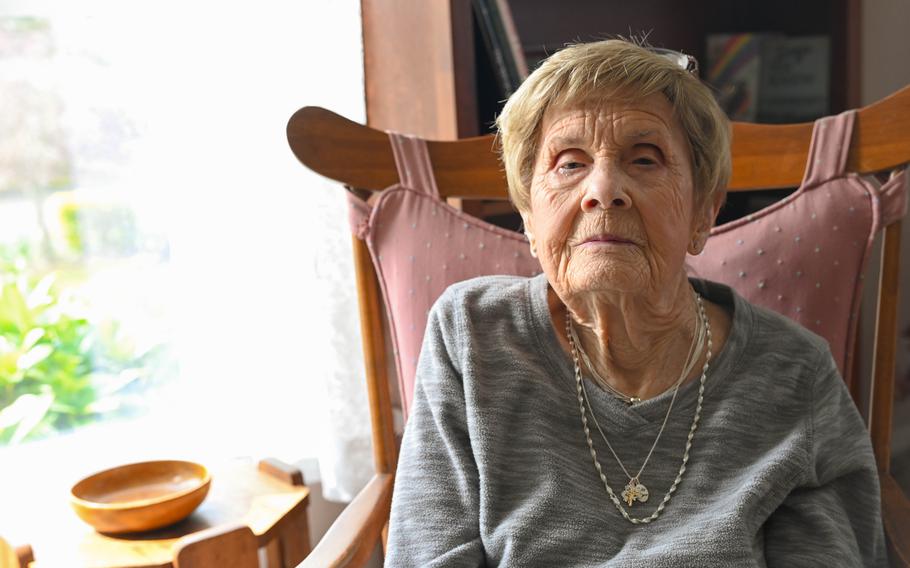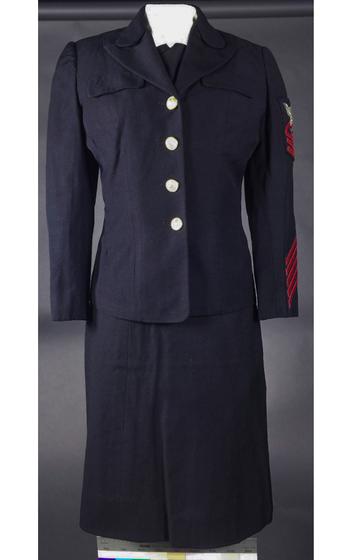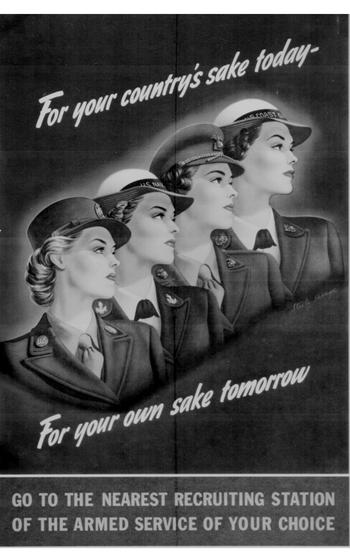
Peggy Lutz sits for a photo after an interview with the Oregon National Guard on March 31, 2025, in McMinnville, Ore. Lutz served in the Navy Women Accepted for Volunteer Emergency Service (WAVES) during World War II more than 80 years ago. (Emily Simonson/Oregon National Guard)
Navy WAVES veteran Peggy Lutz is celebrating her 103rd birthday on Thursday.
Born on April 10, 1922, Lutz was a 22-year-old school teacher at Myrtle Point, Ore., when a U.S. Navy recruiter asked her to join the service in 1944, according to an interview released by the Oregon National Guard.
“The only reason that I went in the Navy was I liked their uniforms better,” Lutz said. “The Army’s [uniform] was just horrible.”
Lutz joined the Navy’s Women Accepted for Volunteer Emergency Service (WAVES) program. The program had been established just two years before she joined and was intended to fill roles in the U.S. left vacant by men deploying overseas.
Enlisted members took on mostly administrative or office positions, though about a third of the women who served in WAVES during WWII had naval aviation duties. Lutz was one of them. She was assigned to air traffic control and reported to Klamath Falls Naval Air Station in her home state of Oregon, before later transferring to Naval Air Station Tongue Point in Astoria, also in Oregon.
It wasn’t always seamless. Lutz and her peers faced discrimination from some of the men they worked alongside. But Lutz also said that pilots “welcomed us because they liked our voice.”
“We just laughed about the fact that our work was [deemed] not as acceptable as man’s work, and yet we were doing better. Actually our statistics were better,” Lutz told the Oregon National Guard.
Lutz worked at Tongue Point until WAVES was disbanded in January 1946. The release says Lutz wanted to continue serving but faced expectations to return to the household. She was also unable to find civilian air traffic control employment because of prejudices about women in the workforce, and she returned to being a school teacher.
Lutz remains proud of her service and her WAVES uniform remains on proud display in her home eight decades later.

A uniform for the U.S. Navy’s Women Accepted for Volunteer Emergency Service (WAVES) program is seen on display. The WWII-era program was established to fill roles in the U.S. left vacant by men deploying overseas. (Naval History and Heritage Command)

A 1944 poster by Steele Savage encouraging women to join the U.S. military, which opened reserve roles for them as large numbers of men were deployed overseas. (National Archives)